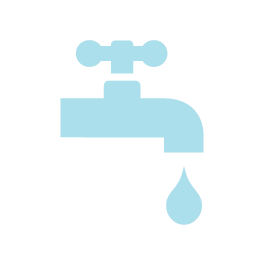 Strategies for Rural Development in Areas with Limited Public Infrastructure: Alternative Septic Systems
Strategies for Rural Development in Areas with Limited Public Infrastructure: Alternative Septic Systems
Operation and Maintenance Requirements
Operation and maintenance (O & M) needs for different septic treatment technologies vary considerably. Conventional onsite systems usually require only a tank pump-out every few years, with an accompanying system inspection. Mechanical systems, such as activated sludge-based units, require servicing three to four times per year to assure that aeration tank solids do not increase to the point that they are “belched” out with the effluent. This can cause both surface clogging at the stone-soil interface in the disposal field, and water quality issues at the receiving water body.
Electromechanical systems also require more frequent inspection (usually annual), to assure proper operation of electromechanical components. Newer modem or wireless internet-based packages can remotely monitor and control many of these mechanical and electromechanical components, thus reducing the need for more frequent inspection and keeping labor costs more affordable.
Well-conceived O & M programs feature improved system design (e.g., risers that are easily accessible from the surface), real-time accessibility to historic system records by field personnel, and automated remote monitoring that can warn or even adjust operational sequences to avoid imminent problems in proprietary pre-treatment systems. Many states do not allow alternative treatment technologies for onsite installations, because they cannot guarantee the increased O & M that is often required to keep them performing as designed. Currently, Maine’s Subsurface Waste Water Disposal Rules allow certain treatment system designs that include alternative waste water treatment technologies, such as peat filters and sand filters, and alternative disposal technologies, such as subsurface drip irrigation. However, these rules do not specifically mandate maintenance requirements for conventional or alternative systems, for annual system inspections, or for documentation of the performance of maintenance activities (such as septic tank pumping and back-flushing of subsurface drip irrigation disposal systems).
The designated RME should include an O & M component in the system management program to ensure that all systems continue to operate properly and meet any established performance standards. Technical staff, system users, and contracted service providers will all play a part in a successful O & M effort. For example, the property owner or an RME may hire licensed septage haulers to perform periodic septic tank pump-outs. Licensed system designers or Professional Engineers may perform regularly scheduled inspections, especially for larger systems and systems using alternative technologies. If a system is sufficiently large or complex, it may be worthwhile to hire a part- or full-time licensed wastewater system operator to pay close attention to the system’s operating parameters. Town clerks, or contract staff hired by a homeowner’s association or management entity, can perform important record keeping functions such as recording inspection results and sending out maintenance reminders.
The property owner plays a critical role in most O & M efforts, particularly in the lower-level management models as described by USEPA. The individual property owner of an onsite system must be thoroughly educated about its proper care and maintenance, for instance that he or she can cause irreparable damage by driving heavy vehicles across the shallow leach field, or by paving the surface above the field. Owners should also be aware that they can compromise the biochemical treatment processes and potentially contribute to the pollution of nearby groundwater or surface water if they dump strong acids or bases, toxic compounds, oils, or greases into their septic system. Both property owners and contracted service providers should also understand that water conservation, garbage grinders, and water softeners will make septic systems function more effectively.
Electronic Tools for Management Assistance
Public and private management entities have developed databases to track wastewater system inventory, maintenance, and other information. Minimum data elements for system inventories include property owner contact information, coordinate (GPS) location, installation date, technology type, and design flow. Optional data elements include site characterization information, designer, installer, RME (if applicable), date and type of last service (pumping, inspection, repair, etc.), service provider, and operational status. Additional potential database functions include automated reporting for sending maintenance, inspection, or permit renewal reminders, tracking and reporting of performance data, and Web-based reporting for homeowners, inspectors, maintenance providers, or regulators. The following public and private database systems provide useful examples of existing inventory and management options:
- SepTrack, developed by the Buzzards Bay National Estuary Program in Massachusetts
- SepticPlanner, developed by Pamlico County, North Carolina
- IWIMS (Integrated Wastewater Information Management System), developed by Stone Environmental, Inc., Montpelier, Vermont
- CASST (Computer Aided Septic System Tracking), developed by AppliTech, Inc.
- Carmody Waste Recording Services, developed by Carmody Data Systems Inc
- Purdue University Onsite Wastewater Disposal Permit Database
Related Work Plan Components
- Climate Change and Infrastructure Resilience
- Modernizing Communications/Electric Utility Infrastructure
Workgroup Contacts
In Aroostook County: Jay Kamm, Ken Murchison, Joella Theriault
In Washington County: Judy East

Share this content: